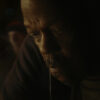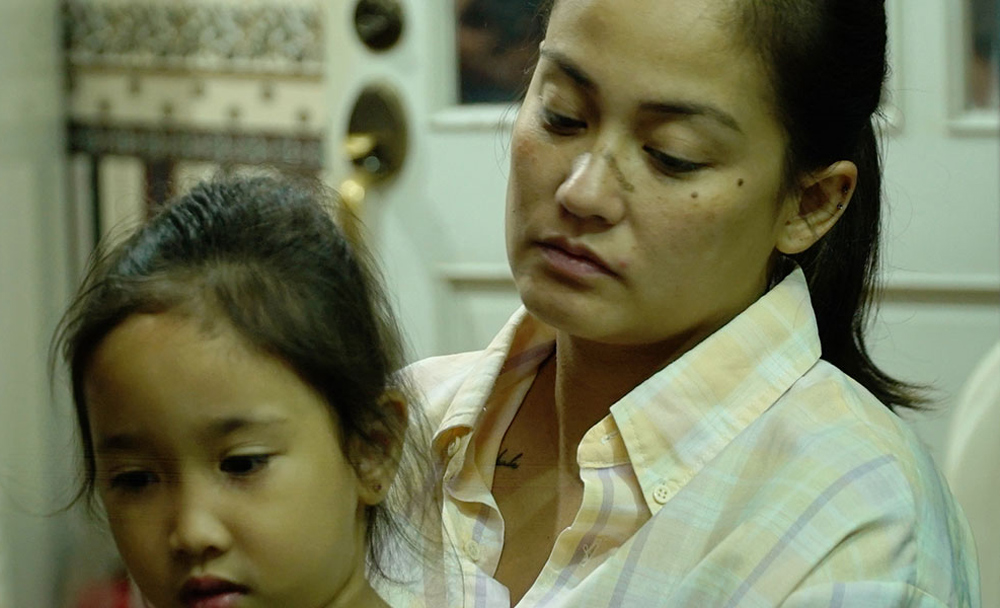Raymund Ribay Gutierrez had started out as a graphic artist in his native Philippines, designing posters for others when he realized something was amiss.
“Making still pictures was not enough for me anymore,” recalls Gutierrez. “I found interest in making them move, to have emotion. Telling stories is really my nature because I always put stories in everything, even in the back of my mind.”
Soon enough, he found himself enrolling in a workshop put on by one of the country’s foremost filmmakers Brilliante Mendoza, and in channeling his own anxieties about making an indie film in a short called “Anggulo,” he won a prize for Best Director. After some persistent badgering, Mendoza suggested that he meet with Bing Lao, the man that mentored him, and instructed that no one was going to write a script for a first-time director, so he’d have to generate his own material. He did just that with “Imago,” a 2016 short that premiered at Cannes and went on to play the Toronto Film Festival, where it won the TIFF Shorts Cuts selection.
If Gutierrez seems like he’s been on a tear in recent years, showing a relentlessness in creating career opportunities for himself, it pales in comparison to the feelings he elicits with his ferocious debut feature “Verdict.” A legal thriller centered on a vicious case of domestic abuse, the writer/director takes a refreshingly frank approach to the sensitive subject matter by refraining to cast doubt on the recollections of those involved, instead thrusting audiences immediately into witnessing the terrible events that later come into question in court. Gutierrez doesn’t linger on the physical pain inflicted by Dante (Kristoffer King), who comes home one night and takes out his drunken rage on his wife Joy (Max Eigenmann) and their young daughter Angel (Jordhen Suan), but he illustrates in excruciating detail the wounds that are created and often reopened after Joy finds the courage to file a police report, putting the estranged family at the mercy of a justice system that seems anything but just.
While Gutierrez hired professional actors to play the nuclear family at the center of “Verdict,” he surrounds them with nonprofessionals often connected to the roles they have in the film in their professional lives and the sense of authenticity throughout is unnerving as the filmmaker draws out the weight of what Dante and Angel run up against organically — the slow grinding cacophony of conversation inside the courthouse that turns everything into a din, the piles of paperwork of unresolved cases stacked up on desks and file cabinets that feel as if they’re about to topple over at any second and the strict legal procedures that wring out any nuance that could help decide matters in a satisfactory way to either party, let alone both. It’s a gripping and provocative drama that has already been recognized with a Special Jury Prize for Gutierrez at the Venice Film Festival and as the Philippines’ official entry to the 2020 Oscars for Best International Feature Film, and during the Toronto Film Festival, the filmmaker spoke about the inspiration behind it, the spontaneity he craves and how he’s able to channel the energy he feels on set to the screen without losing anything in translation.
It was a personal encounter with a victim late at night when I was at home. My mom and I heard the neighbors talking loudly and we didn’t really bother to check on it because it’s very usual to talk that loud from our neighbors, but it was unusual [after] that the husband came to our house, asking for help, carrying his daughter, face full of blood, and also the mother’s at the back, brutally bruised. That encounter really stuck with me, and I found out that the two of them became a couple again two days after. I asked the victim what happened and she told me she pursued the case, but she didn’t [really] pursue it at all because of the impracticality — [it seemed like a] waste of time, waste of money, and lots of bureaucracy and that’s where I came up into a certain [understanding] that the physical battery is less [painful] compared to the bureaucratic abuse that you’re going to get into.
Another factor [preventing reporting these crimes] is the love they perceive in their social class, which I don’t understand at all. People that grew up in the lower class in the community somehow perceive that’s the kind of love that they deserve. You can’t really blame them because it came from their parents. It’s a cycle, and you cannot change that overnight. After learning the situation, [I decided] the domestic violence is too personal, so I dug more into the process of the justice system, and [how] justice delayed is justice denied — sometimes you need to get the justice in time properly for certain cases and if you didn’t get it in time, it won’t mean as much anymore. It’s ignored. So I interviewed lots of lawyers, lots of abused women and the abusers as well to get their side. I even enrolled in a crash course of law with the help of my friends who were lawyers and that’s when I found out the bigger problem in society.
It’s interesting when you are able to create a very emotionally engaging film, but because it takes the perspective of looking at the justice system rather than favoring one of the parties involved in this domestic abuse case, you’re tasked with creating energy over empathy for one character over another. Was that approach there from the start?
I acquired that kind of style from the perspective of the justice system, which is equality. They treat all suspects and victims as equal, so I wanted treat both the victim and the suspect also equal and what I’m showing is the process. At the end of the day, both of them are victims of the process and that’s what makes them move. Obviously, I’m pro-women, but very subtly I still want the audience to decide what kind of judgment they receive in this situation because I interviewed several judges in certain cases and most of them have the same situation that I depicted in the film [where] it’s not what the judge wants, but the technical aspect [of the case] or the quality of the lawyer [affects the outcome].
Since I’m telling this kind of procedure in the justice system, I chose domestic violence because this is the epitome on how [a case can get caught in] the bureaucracy, but it can happen in [other] cases. Domestic violence is just the strongest manifestation of the procedural, but it can happen to murder, it can happen with a burglary and sometimes you will have an epiphany that the law is working, but sometimes it’s not effective.

Yeah, actually, most of the scenes were a bit of a mix of spontaneity and real life. I don’t really try to put self-interest in the content, and if the content isn’t asking for it, you might as well remove it, so this is how we shoot. We do lots of interviews, so I’m writing the fact sheet, and then write the script, and in the shooting stage, the script is my bible, so I’m technically tied to the script, but it can go beyond the script because in life, plan A doesn’t always work. We don’t really hesitate from what’s really happening. There is a dream scene and in the middle of the scene, [it started to rain] and I shot the scenes prior to this one, so if I’m going to shoot in the rain, there’s going to be a [continuity] problem in the wardrobe, and we’re running out of time, so I needed to shoot the scene. I came up with an [entirely] different story because it’s [good] production value. I could capture the real rain, so those are the times that I encountered while shooting the scene and I think it works.
Then if i’m going to shoot the scene, maybe I’ll give [the actors] a look [at the script], but not to the point that they would memorize [it], but just to get the essence of the dialogue and the scene, and at the end of the day, I’m telling them that you can do what you want as a character – even though I’m shooting you at this point, if you found an interesting engagement on the other side [of the room], maybe you can go there and I’ll follow you and after that, let’s talk about why do you do it. At that moment, maybe I can revise the script as well. This is what I learned from Brilliante [Mendoza] — to have a fixed voice in your head all the time because as long as you know the script and you know the essence, the film’s already overcomplicated, so [I ask the actors] don’t really put too much effort in. If you want to cry, then cry. If you don’t want to cry, then don’t. I give them space, and at the end of the day, I’m still guiding them if it’s not working, but I want it to be spontaneous. That’s why I don’t really shoot the scenes more than maybe six takes.
Because you have to navigate through a lot of spaces that likely require a lot of thought to shoot inside like the courthouse or the police station, can you let the camerawork be intuitive or is it largely prescribed?
Actually, it’s a difficult on my cinematographer to do it spontaneously because they have a different role in directing. We have this certain kind of theory of found filmmaking, which was founded by Bing Lao, the mentor of Brilliante, and in this theory, you have to tell your stories all the time in one sentence. So that’s what I told my cinematographer. You’re not obligated to catch all the dialogue as long as you know what you want to tell in the scene. So that’s where I came up with coverage of what they’re doing [in the scene] because for me, the dialogue’s not very important. At the end of the day, my audience is international. I don’t want to focus the people on reading the subtitles — I want them to focus on the pictures only. I even tried to minimize the dialogue in this film, but the content [set in a courtroom] is asking for the dialogue, so that’s a bit of a struggle for me because sometimes I don’t have any choice, and to capture the dialogue, I mostly have a three-camera set-up, maybe a four-cam set-up — even I’m holding the camera, and the good thing about it is that all of my camera operators know what to do. We came from the same school, so it’s more flexible to move.

It was all planned. I wanted to capture life in the way I saw it. In the Philippines, it’s very loud, and I didn’t use any music at all. I just used the diegetic sound of the environment and turned it into music that’s basically the mandala, which is reflecting life as it is. That’s my guide in the filmmaking process, as if you could categorize it as a documentary, but if you look deeper into it, it’s very structured.
What’s it like bringing this out into the world?
I’ve always gone to Europe for most of my trips, even from the short films that I made,so this is the first time I came to the U.S. to get the audience from the West, and if you ask the Europeans, they really loved it, so even though I won the TIFF Short Cuts here in 2016 [for “Imago”], I don’t really have the background of what an audience thinks about the film. It’s very different because maybe I have a similar topic, but [I’ve gotten the sense that] the approach is very unique for a western audience and it’s a good thing I have their comments so I can put [some of that consideration] into the next film I’m going to make.
“Verdict” does not yet have U.S. distribution.





